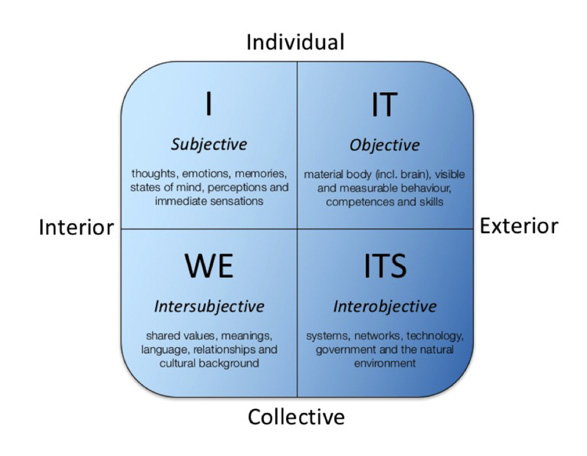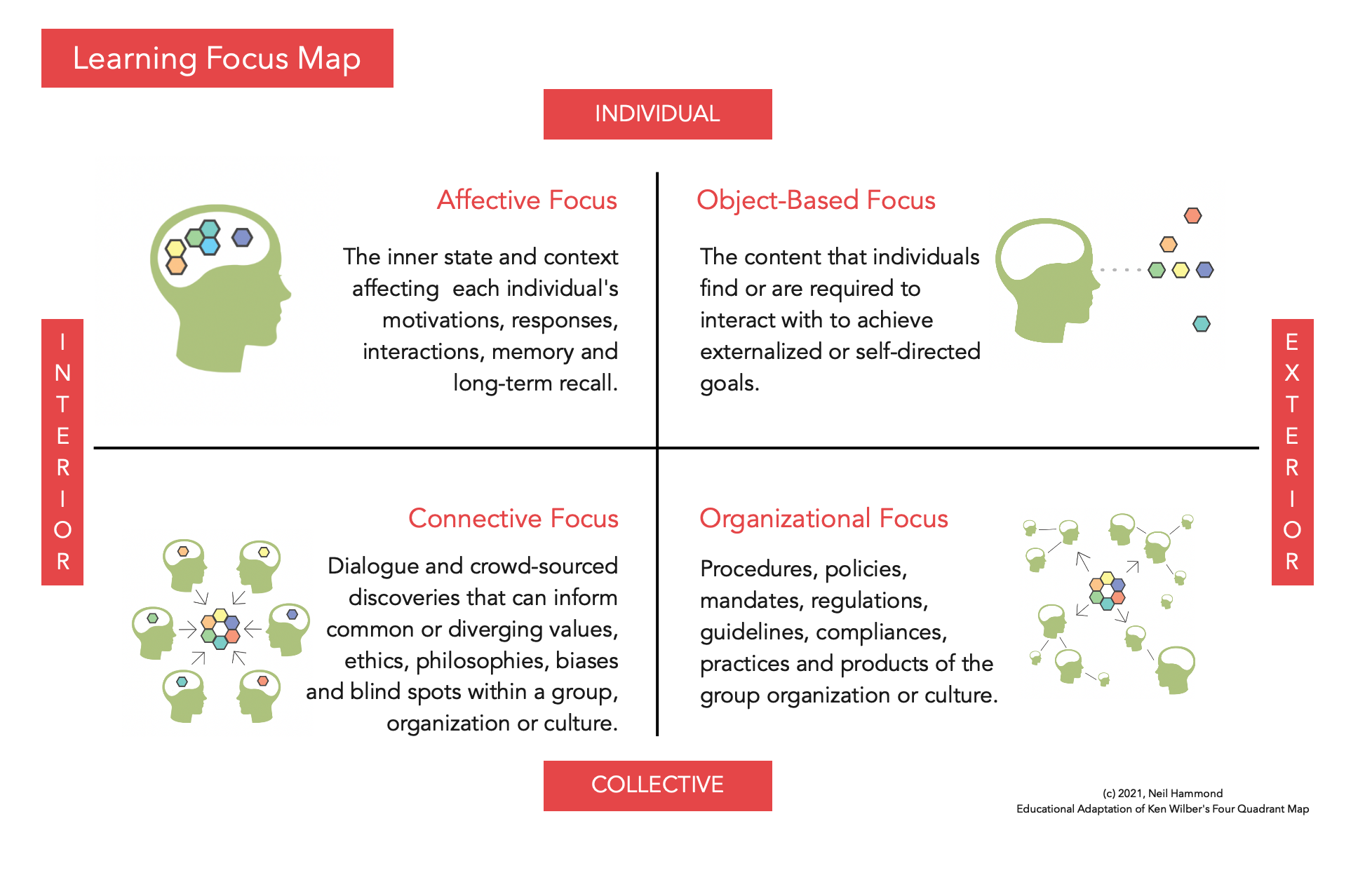
Central to our approach in almost every aspect of what we do at Learnbase is the Learning Focus Map.
It’s proven to be an essential tool in supporting collaborative conversations around analyzing and planning learning design as well as product development approaches, tools and tasks.
Learnbase’s Learning Focus Map builds directly on philosopher Ken Wilber’s Four Quadrant approach to mapping both the external realm of things, and the internal realm of notions, ideas, emotions and perception. It’s one of Wilber’s core contributions to the philosophical approach known as Integral Theory. Wilber’s model is a deceptively simple heuristic. It has dramatic implications on how to chart relationships, differences and perspectives between any notional or actual objects within the landscape of human experience.
It is normally represented as the diagram below:

We adopted the approach and reframed it to create a framework for analyzing or planning adult education and training contexts. To keep things agile, we have also chosen specific vocabulary and terms that we use to explain the concept very quickly and in general terms to client workgroups, without needing to allude to too much background theory.

The Learning Focus Map helps us to provide:
- appropriate and balanced deployment of approaches, skills and technologies;
- insightful planning and structuring of navigation and architecture of learning platforms and apps
- identification of gaps and areas for improvement and (re-)development of existing courses;
- assessment of approaches and learning technologies
- a deep informed basis for project planning
Most importantly, the Learning Focus Map provides a constructivist framework for self-reflection of our own acquired biases. We’ve witnessed many ‘aha’ moments when using it with clients to explore the gap between their organizational approach and the actual requirements of their audience.
We were guided by two key requirements:
- It needs to be inclusive of many (all) learning theories and approaches, conventional, emerging and future;
- It should be a tool that can be used by both learning specialists and non-specialists alike.
In the next post we’ll explain how the map works: Explaining the Learning Focus Map